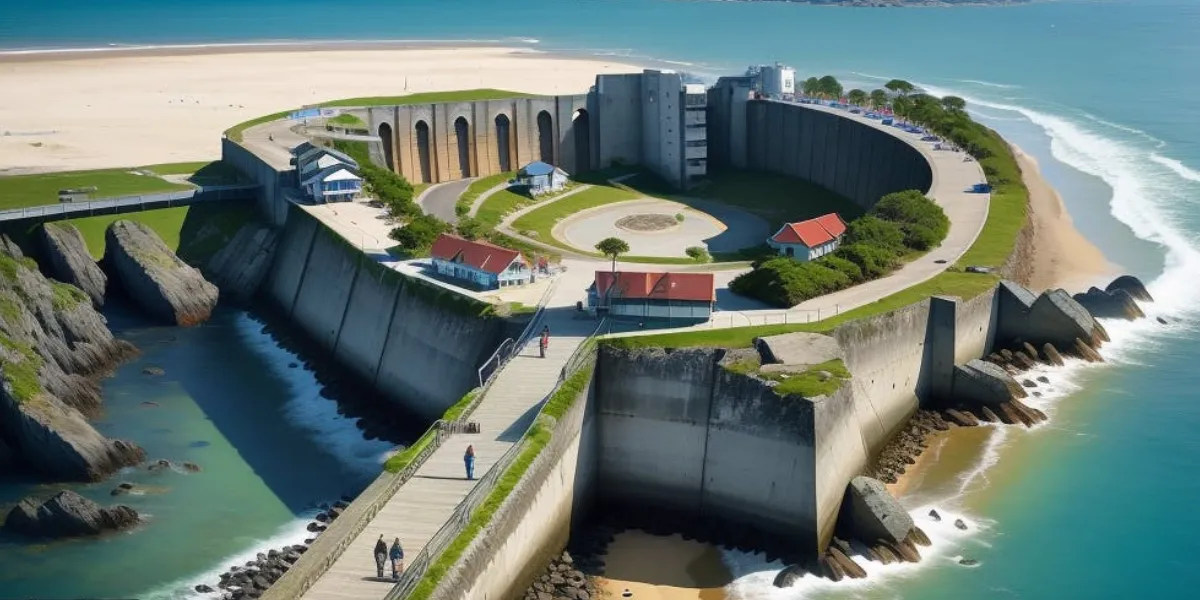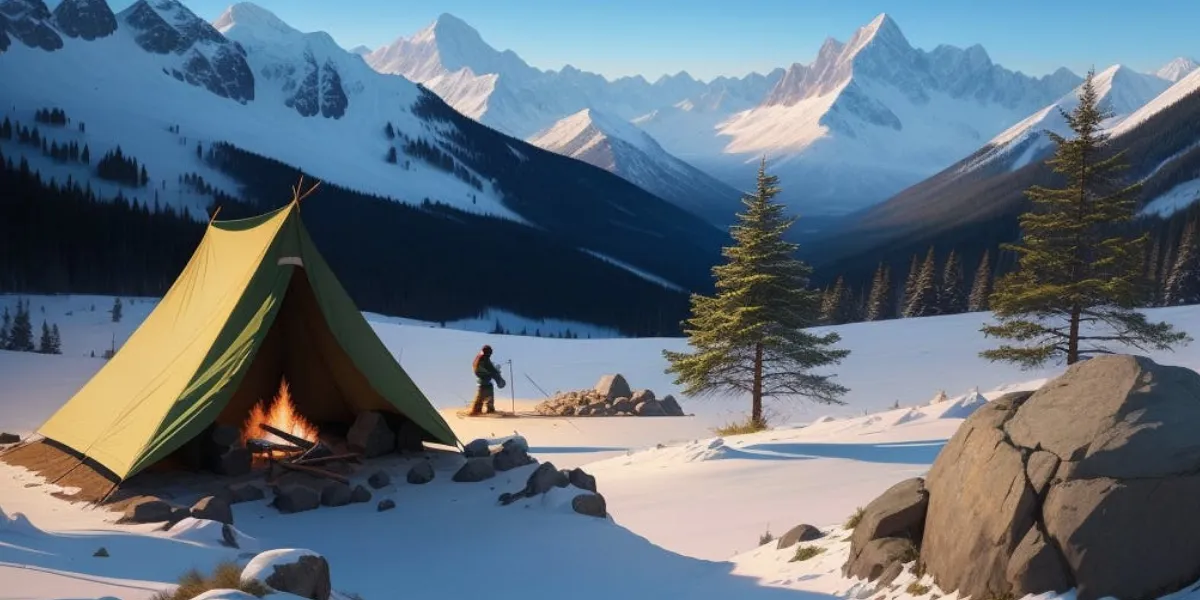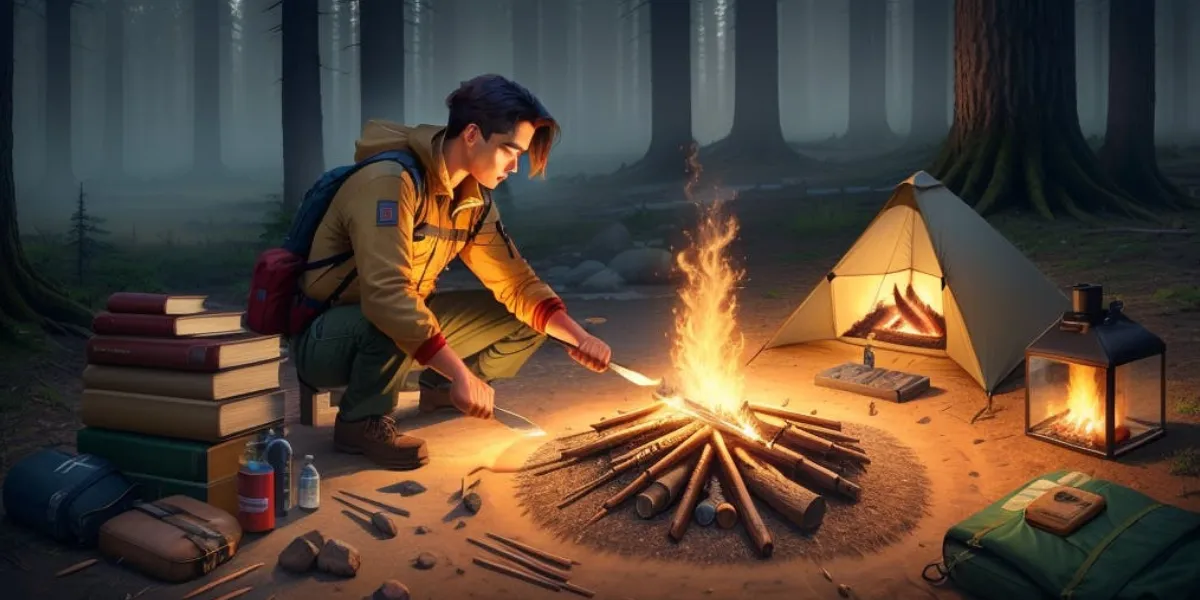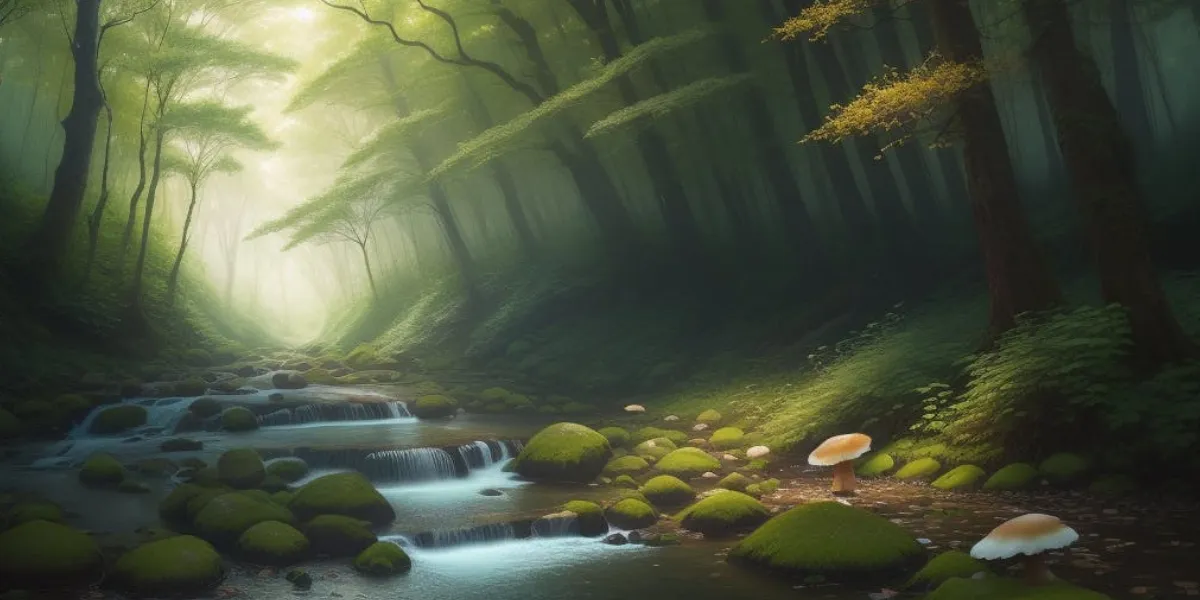
Wilderness Survival Skills: Must-Know Basic Survival Skills To Learn
Do you know what to do when disaster strikes? Be prepared! Learn the basic survival skills you need for navigating the wild and staying safe in natural disasters. From building shelters to sourcing food and water, this article will guide you through essential techniques and provide tips to assemble your wilderness survival kit. Don’t wait until it’s too late - equip yourself with the knowledge to tackle any emergency head-on.
Key Summaries
Knowing how to start a fire without matches or a lighter is crucial in a survival situation.
Building a shelter is essential for protection from the elements in a wilderness survival situation.
Knowing how to purify water is vital as water sources in a survival situation may be contaminated.
Familiarizing yourself with basic first aid techniques for wilderness survival can make a significant difference in emergency situations.
Importance Of Basic Wilderness Survival Skills: Important Survival Tips
Learn the important survival tips and develop the basic wilderness survival skills you need to navigate and survive in challenging outdoor environments. In the wilderness, having the right survival skills can mean the difference between life and death.
One of the first skills to master is building a survival shelter. A lean-to shelter is a simple and effective option, using branches and leaves to create a sturdy structure that protects you from the elements.
Fire starting is another crucial skill. Knowing how to start a fire can provide warmth, cook food, and signal for help.
It’s also important to find a source of drinking water to avoid dehydration. Learn how to identify edible plants and berries in the wild, but always be cautious and do your research beforehand.
Additionally, carrying a well-stocked first aid kit is essential for any outdoor adventure.
Lastly, be aware of the signs of hypothermia and take steps to prevent it, such as dressing in layers and insulating yourself from the cold ground.

Basic Survival Skills You Need To Know
In a survival situation, knowing how to start a fire is crucial. Fire provides warmth, light, and a way to cook food. To start a fire without matches or a lighter, gather dry twigs, leaves, and bark. Use a fire-starting method, such as a flint and steel, to ignite the tinder.
Another important skill is building a lean-to. In a wilderness survival situation, a lean-to provides shelter from the elements. Find a sturdy tree or use branches as support beams, then cover the structure with large leaves or debris.
Additionally, knowing how to purify water is vital. Water sources in a survival situation may be contaminated, so it’s important to remove any harmful bacteria or parasites. Boiling water is the most effective method, but if you don’t have a pot, you can use a clear plastic bottle and sunlight to create a solar still.
Lastly, understanding how to regulate your body temperature is essential. Layer your clothing to insulate your body and conserve heat.
Basic First Aid Techniques For Wilderness Survival
To effectively respond to natural disasters, it’s essential to familiarize yourself with basic first aid techniques for wilderness survival. In a survival scenario, knowing how to provide basic first aid can make a significant difference in the outcome of an emergency situation. Along with essential survival skills such as fire-starting, finding clean drinking water, and building shelter, understanding basic first aid techniques is crucial for your overall preparedness.
In wilderness survival, injuries can occur more frequently due to the unpredictable nature of the environment. Knowing how to treat wounds, burns, fractures, and other medical emergencies can potentially save lives. Some key first aid techniques to learn include wound cleaning and dressing, splinting, CPR, and the Heimlich maneuver. Additionally, it’s important to carry a first aid kit with essential supplies such as bandages, antiseptic wipes, adhesive tape, pain relievers, and emergency contact information.
Survival training programs often include basic first aid as a fundamental component. These courses teach participants how to assess and respond to injuries in remote locations where access to medical help may be limited. By acquiring these skills, you can increase your chances of survival and assist others in need during a natural disaster or wilderness emergency.

Building A Shelter: A Key To Wilderness Survival
When facing a natural disaster or wilderness emergency, one of the most crucial steps you can take is building a shelter to protect yourself from the elements. Having basic survival skills will help you immensely, especially when it comes to building a shelter.
Start by finding a suitable location for your shelter. Look for a spot that’s elevated and away from potential dangers like falling rocks or flood-prone areas. Once you have found a safe spot, gather materials to construct your shelter. Look for branches, leaves, and any other natural resources that can provide insulation and protection.
There are different types of shelters you can build depending on the situation. A lean-to shelter is simple and effective. Find a sturdy tree or rock and lean branches against it, creating a sloping roof. Cover the roof with leaves or a tarp if you have one. Another option is a debris hut, which involves creating a framework of small branches and covering it with leaves and debris for insulation.
In addition to building a shelter, it’s important to have fire-making skills to keep warm and cook food. Flint or other fire-starting tools should be a part of your survival kit. Knowing how to find edible plants and locate a source of water is also crucial for long-term survival.
Building A Fire: Essential Fire-Building Techniques
Continuing on from your shelter-building efforts, now focus on mastering essential fire-building techniques to ensure your survival in the wilderness.
When you find yourself lost in the wilderness, knowing how to build a fire can mean the difference between life and death. Fire provides warmth, protection from predators, and a means to cook food and purify water. In dire situations, it also serves as a signal for rescue.
To start a fire, you’ll need to gather dry tinder, kindling, and fuel. Tinder consists of small, dry materials like leaves, grass, or twigs. Kindling includes small sticks, while fuel refers to larger pieces of wood. Once you have these elements, use a fire starter or make a makeshift one by rubbing two sticks together.
Practice survival skills needed to make fire, such as the bow drill or hand drill method. Remember, fire can provide you with the essential elements of survival: heat, light, and the ability to cook food and boil water.
With fire-building skills in your arsenal, your chances of survival greatly increase in the wilderness.

Wilderness Foraging: Sourcing Food And Water
When attempting wilderness foraging, it is crucial to be able to source food and water to ensure survival. In terms of food, it is important to have some knowledge of edible plants and mushrooms. Certain berries, such as blueberries and blackberries, can be found in many wilderness areas and are safe to consume.
Other plants, such as dandelions and cattails, have edible parts as well. However, it is essential to be confident in identifying these plants correctly to avoid ingesting something harmful.
Foraging for wild edible plants is a great way to supplement your food supply. Look for familiar plants like berries, nuts, and edible roots, but be sure you know how to identify them correctly.
Additionally, foraging for mushrooms can be a rewarding way to obtain food, but it is vital to have expertise in mushroom identification, as many varieties are toxic.
In terms of water, it is crucial to find a reliable source and ensure its purity. Natural sources such as creeks, rivers, and lakes can provide clean water, but it may still be necessary to purify it by boiling, using a water filter, or chemical treatment.
However, in some wilderness areas, these sources may be scarce, and it would be wise to bring a sufficient amount of clean water or a portable water filtration system.
Ultimately, understanding how to locate and identify edible plants and mushrooms, as well as ensuring access to clean water, is essential knowledge for anyone seeking to forage for sustenance in the wilderness.

Assembling Your Wilderness Survival Kit
To ensure your preparedness for natural disasters, it’s crucial to assemble your wilderness survival kit, building upon the knowledge and skills discussed in the previous section on wilderness foraging. People in survival situations die, and one of the leading causes is hypothermia. Therefore, it’s essential to be prepared for any situation.
Your wilderness survival kit should include items that will help you stay warm and protected from direct exposure to the elements. This includes items such as a sturdy tarp or emergency blanket, a waterproof sleeping bag, and extra layers of clothing.
In addition to warmth, it’s important to be able to build a shelter in order to protect yourself from the elements. Your survival kit should include tools such as a lightweight tent or tarp, paracord or rope, and a compact camping shovel. With time and practice, you can learn how to construct a shelter using natural materials found in the wilderness.
Another critical aspect of survival is being able to identify edible plants. Your survival kit should include a guidebook or pamphlet that can help you identify the plants in your surroundings. This will allow you to forage for food when necessary, increasing your potential for survival.

Outdoor Survival: Navigating The Wild
Having assembled your wilderness survival kit, it’s now time to navigate the wild and put your skills to the test.
Before venturing into the great outdoors, it’s advisable to practice in your own yard or nearby wooded areas. Familiarize yourself with the surroundings and practice essential survival techniques.
Remember, your body can only survive for about three days without water, so it’s crucial to prioritize finding a water source. However, be cautious as drinking untreated water may lead to dehydration or ingestion of harmful pathogens. To purify water, you can either boil it or use water purification tablets.
Additionally, mastering the art of starting a fire is vital for warmth, cooking, and signaling for help. Gather dry wood, tinder, and kindling to ensure a successful fire.
If constructing a shelter becomes necessary, a lean-to shelter is a simple and effective option. It provides protection from the elements and helps maintain body heat. Remember, bacteria and viruses can thrive in the wild, so always take precautions to keep yourself and your shelter clean.
Frequently Asked Questions
What are the 10 most essential wilderness survival skills?
The 10 most essential wilderness survival skills include: building shelter, finding and purifying water, starting a fire, signaling for help, navigating, foraging for food, creating tools, tying knots, basic first aid, and staying calm and positive.
Why are these skills considered essential for survival?
These skills are considered essential for survival because when you are forced into survival situations often the difference between life and death can come down to your ability to find shelter, water, food, and stay warm. Additionally, knowing how to navigate, signal for help, and administer basic first aid can greatly increase your chances of survival.
What is the most common cause of death in survival situations?
The most common cause of death in survival situations is hypothermia. When exposed to cold environments without proper shelter or clothing, the body's core temperature can drop rapidly, leading to organ failure and death.
Are fort-building skills important for survival?
Yes, fort-building skills are important for survival as they can provide protection from the elements and help conserve body heat. Knowing how to construct a sturdy and insulated shelter can greatly increase your chances of surviving in the wilderness.
Why is it important to know how to find and purify water in the wilderness?
It is important to know how to find and purify water in the wilderness because dehydration can lead to serious health complications and even death. Additionally, untreated water in the wilderness may contain pathogens and bacteria that can cause illness.
Can starting a fire be challenging in the wilderness?
Yes, starting a fire can be challenging in the wilderness, especially if you don't have proper tools or if the conditions are wet. However, there are various techniques and methods you can learn to make it easier to start and maintain a fire in the wilderness.
What are some ways to start a fire in the wilderness?
Some common ways to start a fire in the wilderness include using friction-based methods like the bow drill or hand drill, using a fire starter kit, using a magnifying glass or lens to focus sunlight, or using natural tinder and kindling materials to create a spark from a flint and steel.
Why is creating a lean-to shelter important in case of emergencies?
Creating a lean-to shelter is important in case of emergencies because it is a simple and effective way to protect yourself from the elements. A lean-to shelter blocks wind, rain, and snow, and can help insulate your body heat, keeping you warmer and increasing your chances of survival.
What is the ultimate guide to wilderness survival?
The ultimate guide to wilderness survival includes learning and mastering a wide range of skills such as building shelters, finding and purifying water, starting fires, navigating, foraging for food, creating tools, tying knots, administering basic first aid, and practicing mental resilience. It also involves being prepared with the right gear and equipment before venturing into the wilderness.
Why is water higher on the list of survival priorities than food?
Water is higher on the list of survival priorities because the human body can survive longer without food than it can without water. Dehydration can lead to serious health complications and can quickly diminish your physical and mental capabilities. It is important to prioritize finding and purifying water in survival situations.
Conclusion
Preparing for natural disasters is like being a skilled wilderness explorer, equipped with the knowledge and tools needed to survive in the wild. Just as a seasoned adventurer relies on their survival skills and trusty gear, we must also be prepared with basic wilderness survival skills, first aid techniques, and a well-stocked survival kit. By being proactive and ready for the unexpected, we can navigate the wilds of natural disasters with confidence and resilience.

